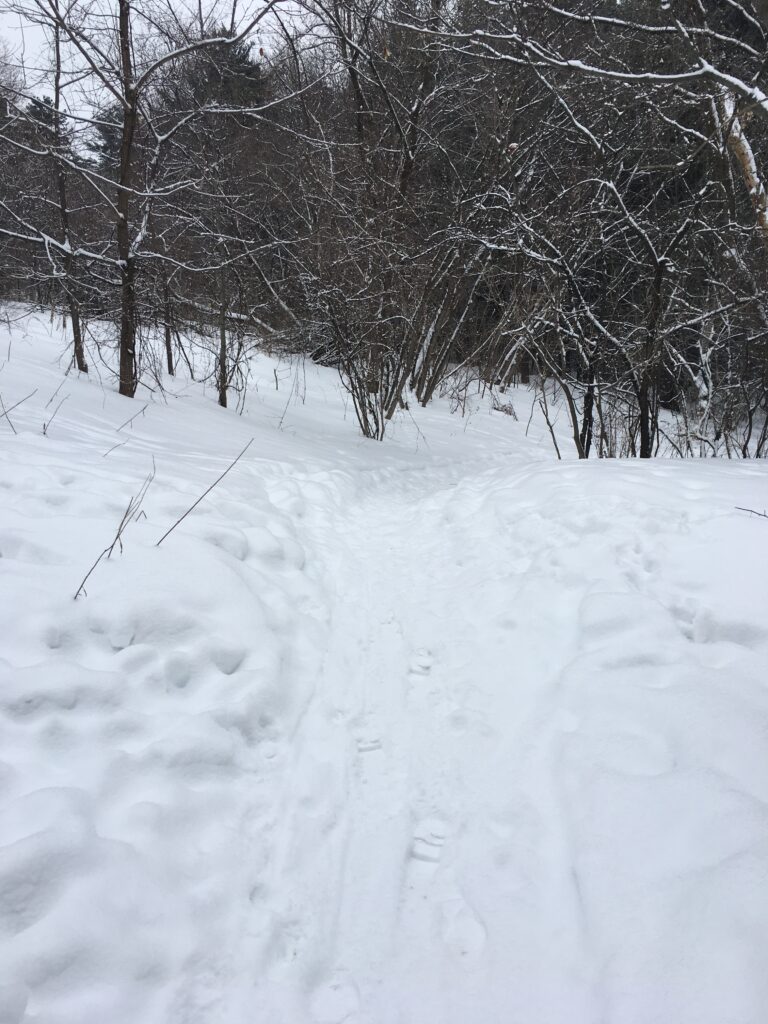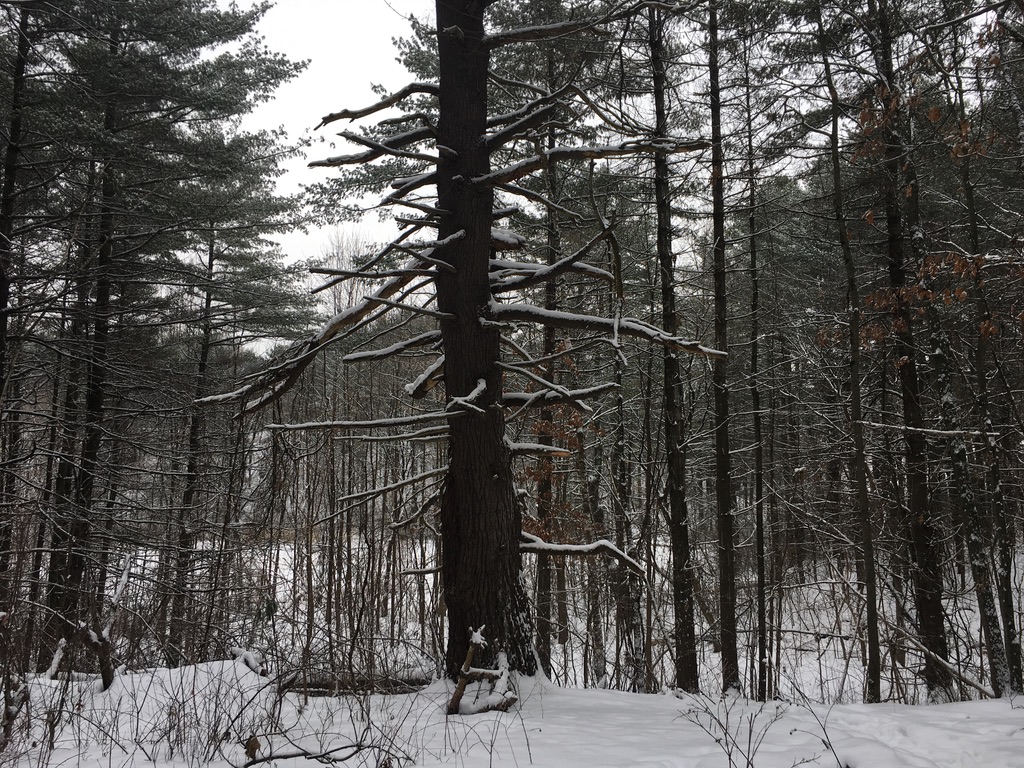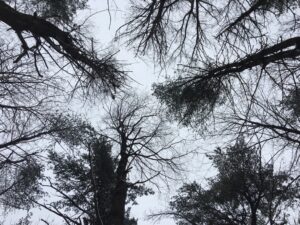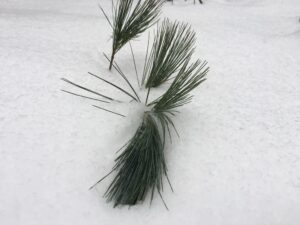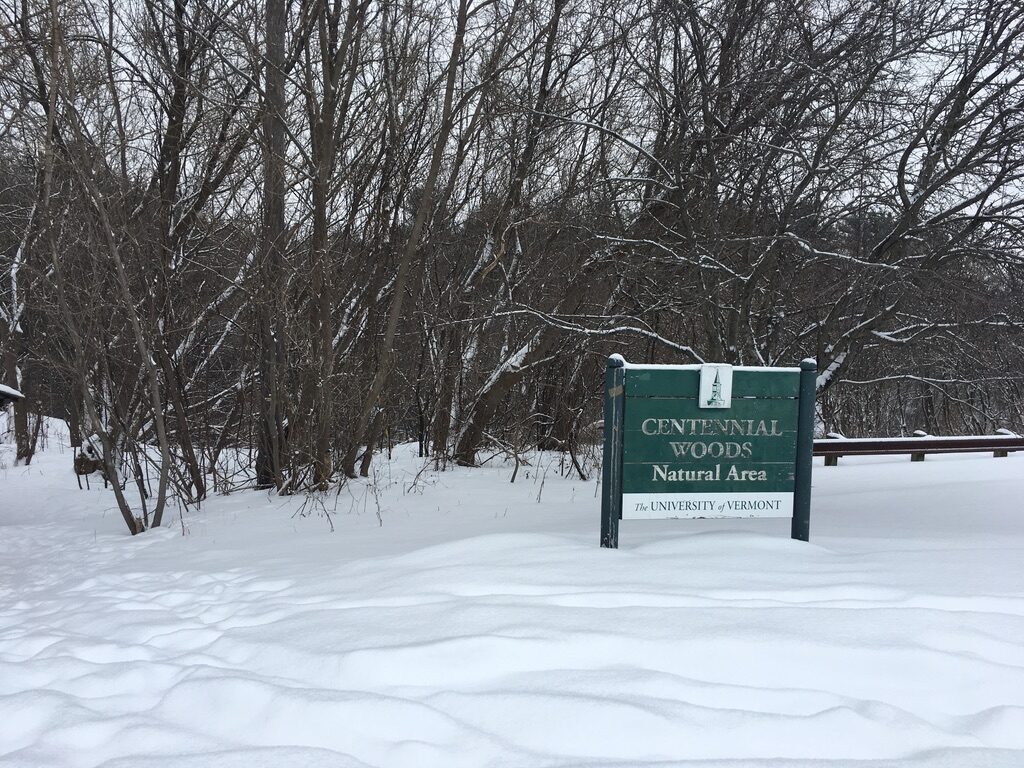In class the past few days we have been looking into tracking animals in the snow. We learned different walks and prints of animals we can identify in the snow. During lab we tracked animal footprints which made finding footprints in my phenology site easier.
This semester I have decided to keep my phenology site in the same spot; the pine stand in Centennial Woods. While walking in Centennial woods this morning I kept a lookout for tracks in the snow. It had just snowed the night before so the light fluffy snow on top make it easy to identify tracks. At my phenology spot I found tracks made by a galloper. The tracks had two large prints in the front and two small in the back that were off set (not parallel). From what we learned in class, I predict this was a rabbit that made these tracks because is was a galloper with prints in a diagonal which means they are land dwellers. 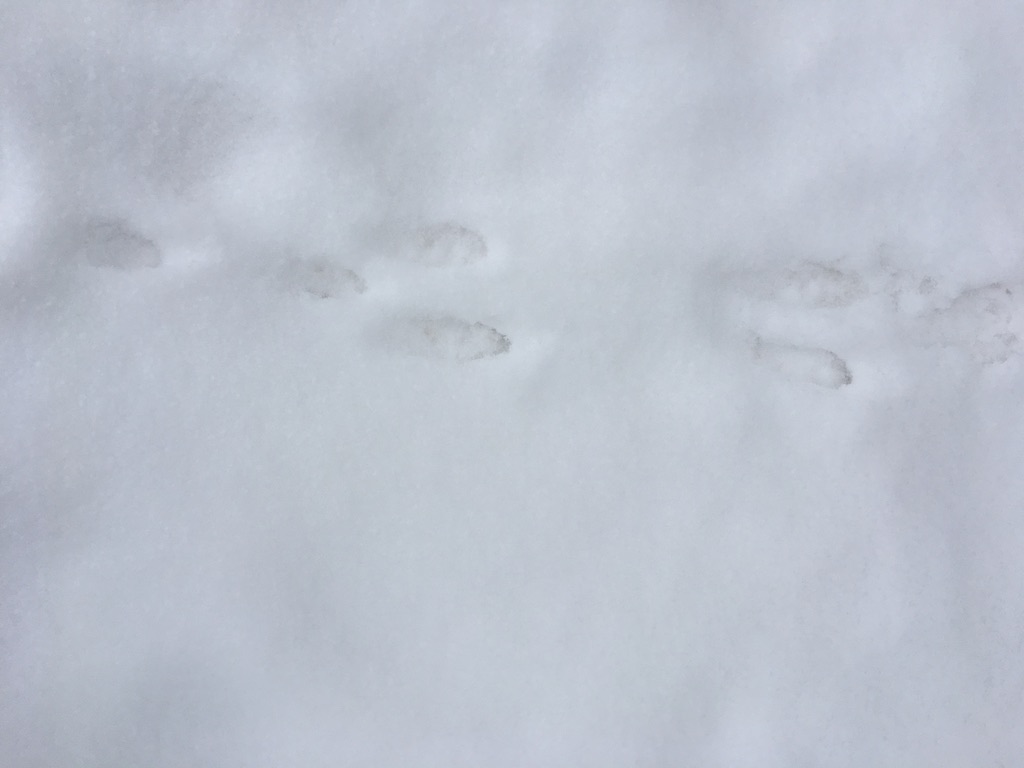
There were lots of older tracks around my site but they had been covered over by many inches of snow. The trail was also well traveled and I could tell there had been humans walking with snowshoes and possibly dogs with them.
My site looks a lot different than it did a few months ago; less leaves, more snow, and more fallen trees. All the evergreens are still holding onto their needles but the deciduous trees have dropped all their leaves. In my site I could identify two deciduous trees; an American Beech tree and a Paper Birch. These two are very easy to identify in the winter. The Paper Birch os easy to identity because of its unique white paper-like bark. The American Beech is easy to identify because they hold into their leaves instead of dropping them like most deciduous trees, these are called marcescence. Below is a twig I picked from the Beech tree. 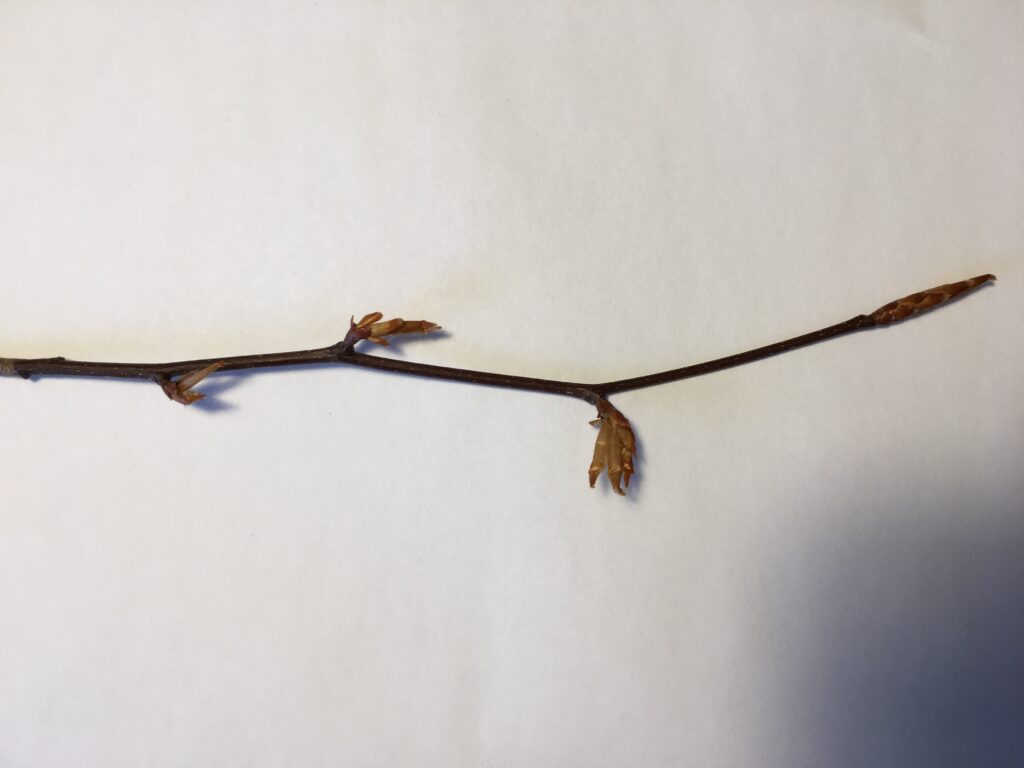
The snow is so beautiful right now, making my site look like a winter wonderland…